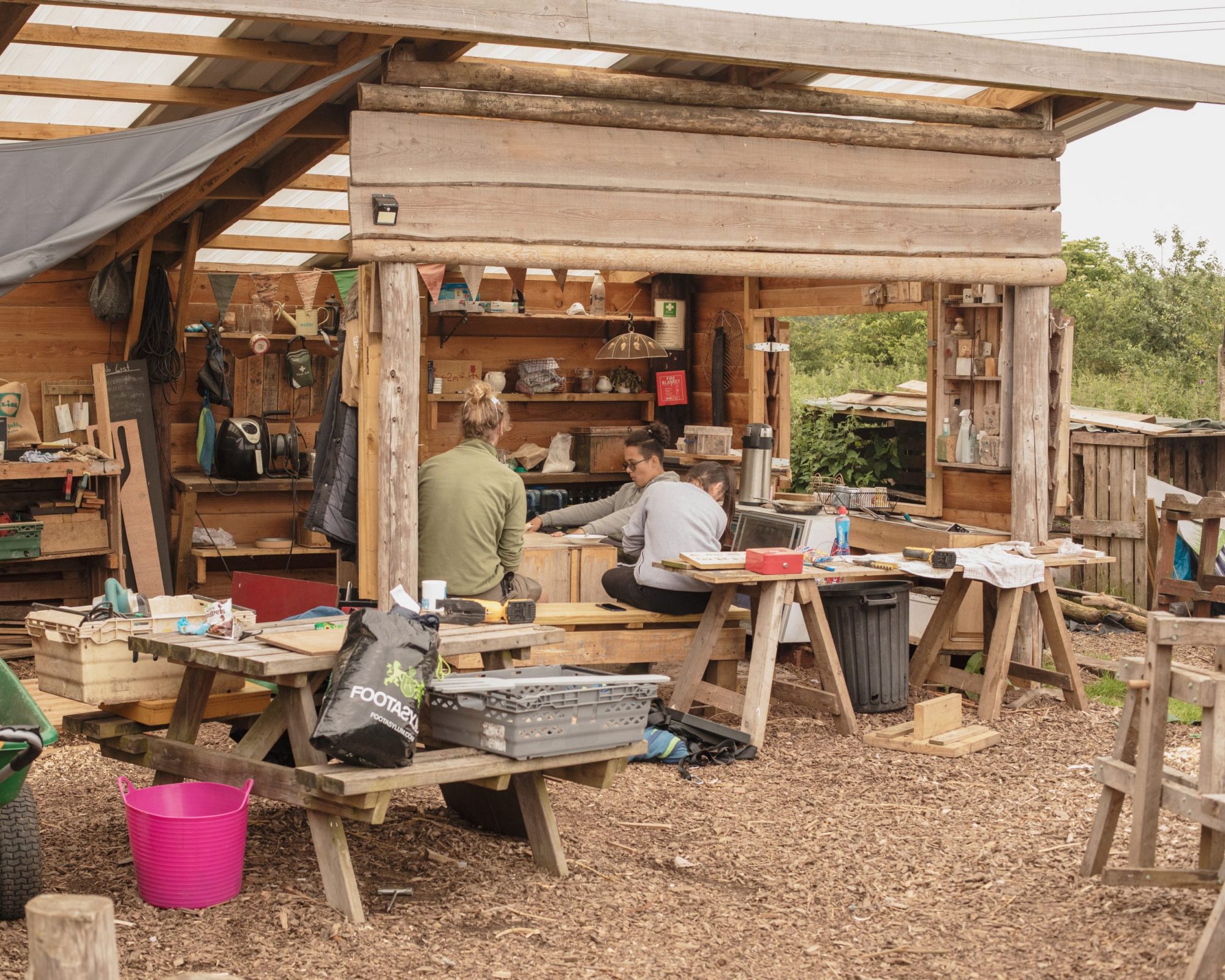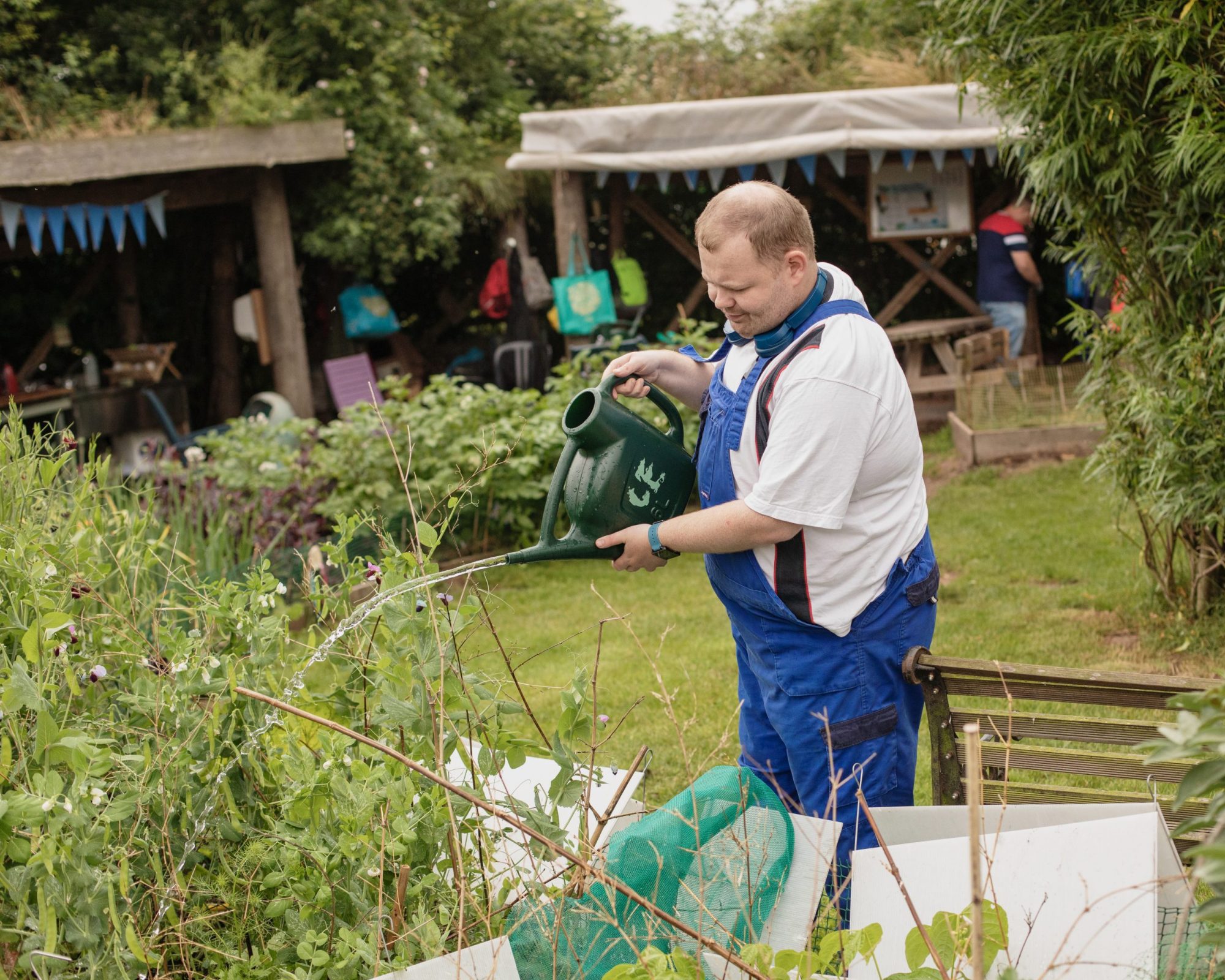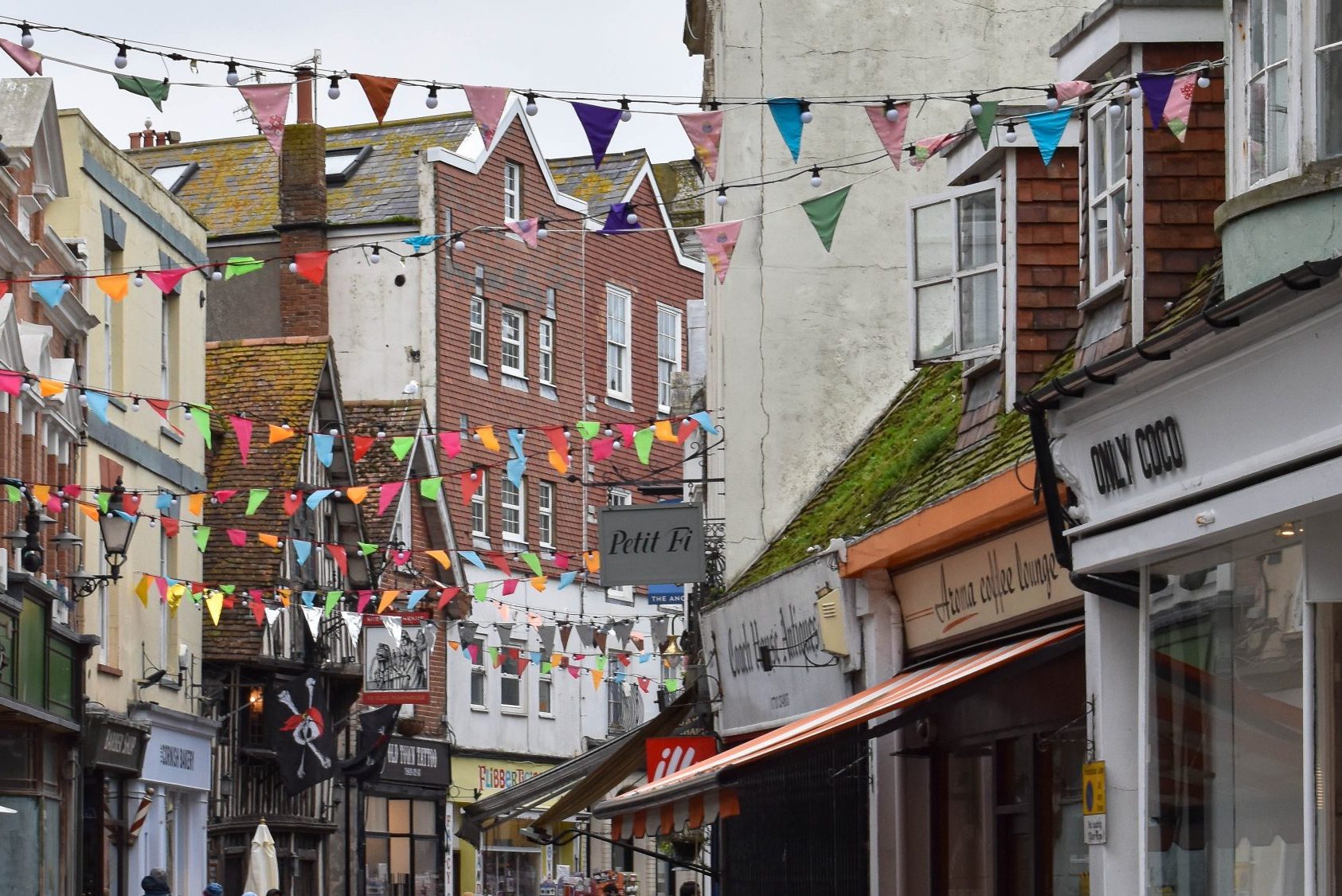Unlike other community businesses, Fordhall Farm didn’t have to move its services online. Instead, it’s experienced a sea change in how it carries out digital communications.
Fordhall is a community-owned farm, with 8,000 shareholders. It’s a community benefit society – a type of society which allows individuals to own interest-bearing shares. It was set up by the youngest children of Arthur Hollins, who had run the farm as a tenant until his death in 2005, as a way to save their father’s legacy.
Charlotte Hollins, Arthur’s daughter, is now general manager at the community business. And her brother Ben is a tenant farmer who still runs a working farm on the same land as his late father. “We offer a lot of different services to the community on the farm,” says Charlotte.
“We have a youth project. We offer care farming for vulnerable people. We have school and educational facilities. We have a café and a farm shop. We have yurts for glamping. We have farm trails which are free to walk and we host community events and weddings.”
“During lockdown, some of the work we did had to stop,” Charlotte says, “but we also started new projects. We initiated an outdoor support group helping people tackle feelings of isolation and loneliness, we supported clients of our local food bank offering cookery and well-being workshops, our café moved to home deliveries, and we worked with children’s services to provide respite accommodation for vulnerable young people.
“In the first lockdown our youth and care projects stopped. But during successive lockdowns we were able to keep those running outdoors with social distancing measures in place, albeit in some cases with reduced numbers.”
Making more use of digital channels
Charlotte says the community business has always had relatively close links to the community, because of the ownership model, but that engagement has stepped up during lockdown.
“We’ve seen a massive increase in demand over the last 12 months,” she says. “People have really flocked to the farm because there are activities they can do in the open air and green space to be enjoyed.
“We’ve used social media a lot more in the past year. We’ve promoted our green spaces. We’ve started to do online videos, including some life-on-the-farm videos that have gone down really well. We’ve found that those have engaged both the audience that was coming to us previously, and a wider audience who weren’t aware of us before. We have felt much closer to our community in many ways as a result.”

The community business has focused on using a few core channels really effectively. “Facebook and Instagram have been the main two social media channels that have worked for us,” Charlotte says.
“We’ve also had a lot of success emailing our members. We’ve had some success with Twitter, but it hasn’t been quite so active. And we’ve done far more blogging on our website. Although we’ve tried many different things, email is still the strongest channel for reaching supporters. We have a mailing list of around 4,000 people and when you get them right, the emails connect really well.
“Our posts will get anywhere from around 2,000 to 10,000 views, which previously we would have got once or twice a year. Previously we would have been expecting to reach hundreds, not thousands. We’ve gained 1,000 followers in the last 12 months. Instagram has ramped up massively too.”
Digital communications is about telling stories
The community business’ approach has been to focus on telling stories about everyday life on a farm. “We found that what works is to be simple, personal and honest,” Charlotte says. “We’ve steered away from being salesy. Instead we’ve offered a window into real life. We took a person-to-person, talking-to-your-grandma approach.
“We saved the farm from development back in 2006 through storytelling. People have always connected with the stories we’ve told. It’s always been the approach we’ve taken on paper, but we’ve not applied it successfully online before. This year we applied it to social media and email, and it worked.
“As things get busier, we will have to work hard to maintain the same quality of storytelling. It’s going to be easier, as things get busier, for social media to take a back seat again and become more sales focussed, but we need to maintain the storytelling balance. We want to make sure that if we are selling something, it’s wrapped up in the story.”
The community business has a mix of audiences. Some people just want to know what’s available, but others want to follow the story and the journey of the farm. Many are keen to offer support. A mailout soon after the first lockdown which contained an invite to the members AGM brought in £25,000 of donations without even asking for donations.
The most popular thing the community business has posted, Charlotte says, was when they donated cream teas as part of the VE Day celebrations for elderly people in care homes. “We wanted to do something for older people in residential homes so we decided to make cream teas for everyone,” she says.
“Staff came in and put cream teas together. Someone knitted blue, white and red pom-poms to go with each one and war time music CDs were donated. When we posted about that, it was really well received. That was seen by about 20,000 people.”

The results have been dramatic, she says. “Partly as a result of the improved coverage, we’ve probably doubled visitor numbers onsite. That wouldn’t have happened without lockdown, but it also wouldn’t have happened if we hadn’t focused on social media.
“In the first lockdown we have five or six times as much traffic as normal to our farm trails. We’ve done two outdoor community events since the start of the pandemic and each has been more successful than any event we did before it. I don’t know if that will continue. I don’t know if we will have quite the same audience as life goes back to normal. But I wouldn’t be surprised if it stayed 50% up on where it was before.”
Volunteer engagement, too, has changed dramatically. The community business uses Twine to track volunteer hours and numbers. Volunteer hours dropped sharply during the pandemic, Charlotte says, because so many volunteers were vulnerable and needed to shield. But volunteer engagement has grown since, and early indications are that volunteer levels will rise to much higher than they were two years ago.
Altogether, Charlotte says, the pandemic has offered an opportunity to engage with many new audiences. “We’ve had a lot of lovely comments from people talking about how much they’ve benefited from green spaces, describing how it has helped them cope and how grateful they are that we are here.
“The memories on the farm through lockdown, we hope will not be forgotten. Many local people found us for the first time as a result of Covid and the relationships we have built with them since, we hope, will last a lifetime.”
Building new connections
Another element of effective digital networking has been not just a public audience, but a new group of partners in the voluntary and public sectors. “We’ve learned a lot about communications tools to build partnerships, and the sense of community has grown,” Charlotte says. “It’s been built through our activities but maintained through social media platforms.
“Our improved presence has allowed us to build new relationships. We’ve always got on well with the local paper and the local radio. But we’ve been able to build new relationships with statutory services. We had some new visitor accommodation on the farm, for example, which obviously we couldn’t use last year.
“So, we connected with children’s services and our new Straw Lodge was put to good use. It’s been used as respite accommodation for vulnerable young people, and now as we come out of lockdowns, it is used as emergency accommodation or training spaces for the council staff.”
She says that digital innovation by the council has been an important factor in forming those connections. “The council formed a central community hub made up of council workers who couldn’t do what they normally do. It formed connections with all sorts of organisations across the county.
“The aim was to connect us all so we could offer mutual support where needed. It was innovative and highly successful. Through their good work, and the work of other local infrastructure organisations, we’ve formed extremely strong digital connections and built new long-lasting networks.
“And that’s the great thing about this. We’ve formed closer connections with so many organisations. And those networks are here to stay.”



